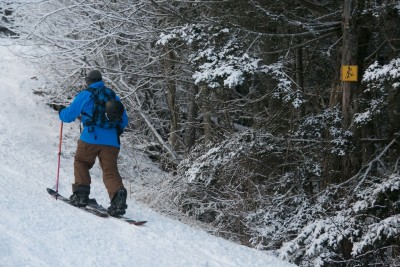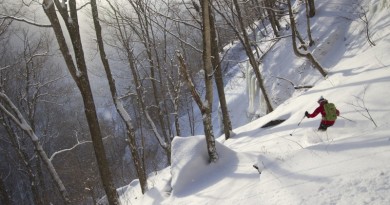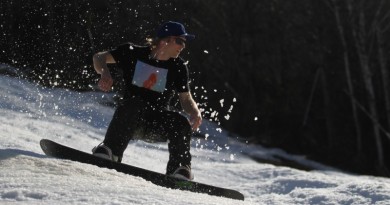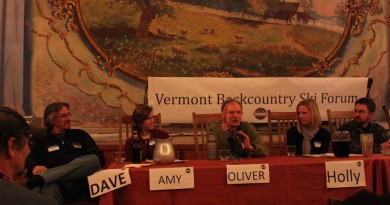Killington and Pico Open Mountains to Uphill Travelers

KILLINGTON — Winter uphill travel by means of skinning and snowshoeing is becoming increasingly popular across the county and world.
By Polly Lynn
Some ski resorts have welcomed the sport; other have fought it — some to the point of jailing perpetrators.
In a well-known instance, backcountry skier Roland Fleck was arrested on Feb. 5, 2011, at Jackson Hole Mountain Resort and was tobogganed off in handcuffs after he refused to stop skiing uphill. Fleck, 78, a longtime Jackson Hole doctor, fitness buff and one of the original investors in Teton Village, was arrested on misdemeanor charges of criminal trespass, interference with an officer, unsafe skiing and theft of services. Fleck spent about seven hours in the Teton County Jail.
But times change, and Killington Ski Resort and Pico Mountain now fall into the former group of ski areas supporting uphill travel. Just before the New Year, they published their formal policy welcoming winter uphill travel enthusiasts with signage, an official annual pass and designated routes open 24 hours a day, seven days a week.
Locals, many of whom have been skinning up the mountains for years, have largely welcomed the resorts’ policy and see it as a progressive step forward. Last year a group of locals formed an organization called USTO (Uphill Snow Travelers Organization) to consolidate their ideas for an official uphill travel policy and opened the conversation with Killington Resort and Pico Mountain.
“This is a big deal folks,” said Mike Miller, a founder of USTO in an email to the local travel group. “If we can respect the mountains’ policy, they will open more terrain for us.” The uphill routes are currently Ramshead at Killington and Summit Glades at Pico.
The goals of USTO are to promote safe uphill travel, create a central location for members to share concerns and/or opinions, to work with resorts or land owners who have policies in place, and to help others create policies.
Land use
The Vermont Department of Forest, Parks and Recreation and the National Forest Service acknowledge that ski resort operators have the ability to decide and define how ski trails and facilities can be operated, accessed and utilized. This provides Killington and Pico authority over land use at both locations. Killington Ski Resort leases land at Killington from the State of Vermont and land at Pico is privately owned.
Uphill travel routes will be made available at both Killington and Pico during the winter season as conditions permit.
“We will open uphill travel routes in line with our ability to effectively manage and operate all functions within the entire resort, including but not limited to snowmaking, trail grooming, equipment maintenance, snow removal, etc.,” Killington Resort explains in its Uphill Travel Policy online.
The Uphill Travel Pass
There is no charge for an Uphill Travel Pass for anyone who has already purchased a 2013-14 Killington or Pico season pass. Uphill Travel passes are available at the Killington and Pico Season Pass offices during operating hours. For those without a season pass, a 2013-14 Uphill Travel Pass can be purchased for $20 and may be used at Killington and Pico. The Pass does not provide lift access either up or down the mountain.
In addition to wearing the pass, all uphill travelers are required to sign a 2013-14 Winter Uphill Travel Express Assumption of Risk form before accessing open and designated uphill travel routes.
All uphill travelers are also required to:
• Wear reflective clothing and a bright headlamp if you will be on the mountain in low light or when it’s dark. It’s your responsibility to make yourself visible to operations personnel.
• Travelers must not stop where you obstruct a trail, or are not visible from above. Do not stop in high traffic areas.
• Travel on the edge of the trail and don’t stand more than two people side-by-side across the trail.
• Pets are not permitted on trails and slopes.



